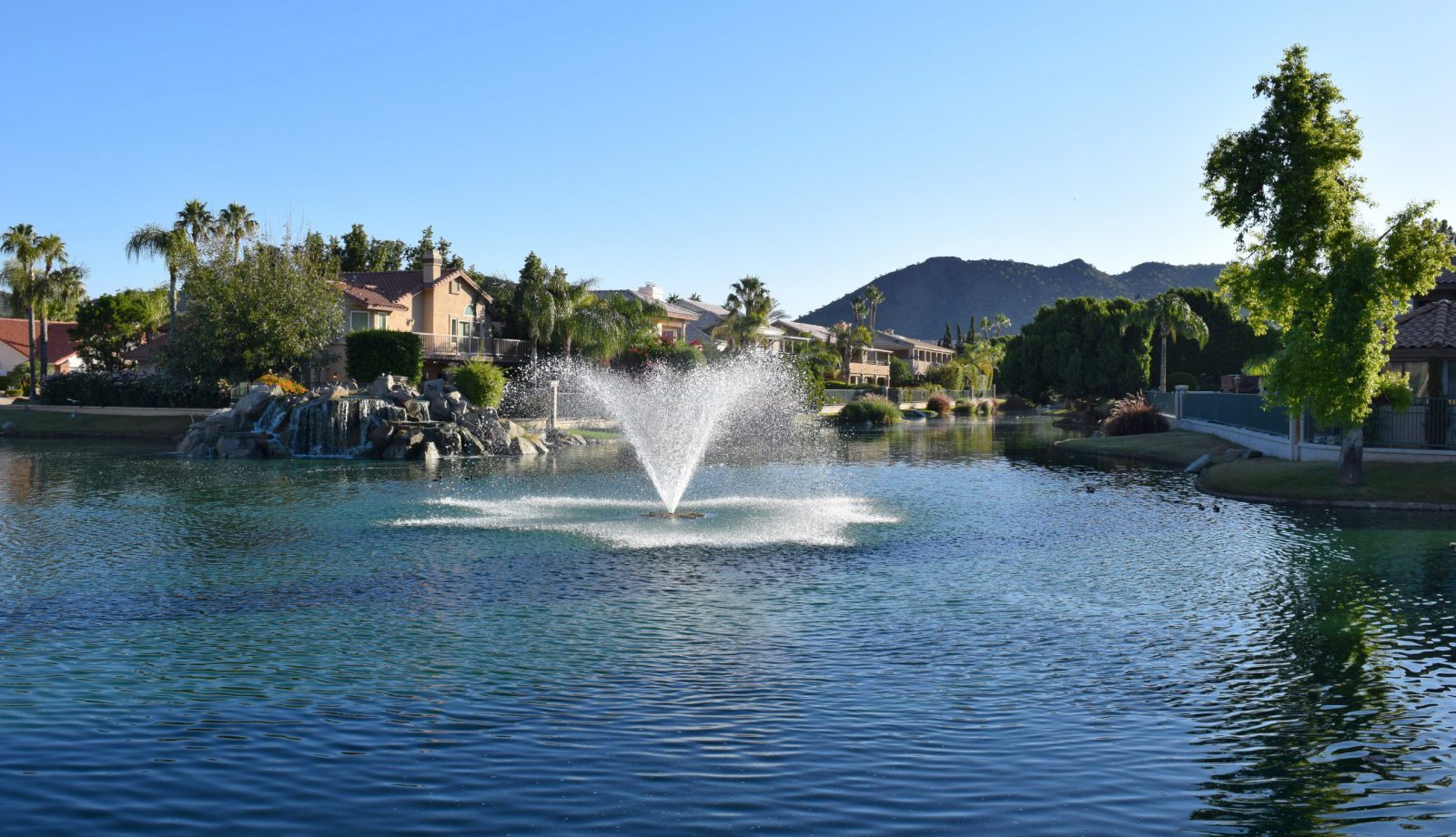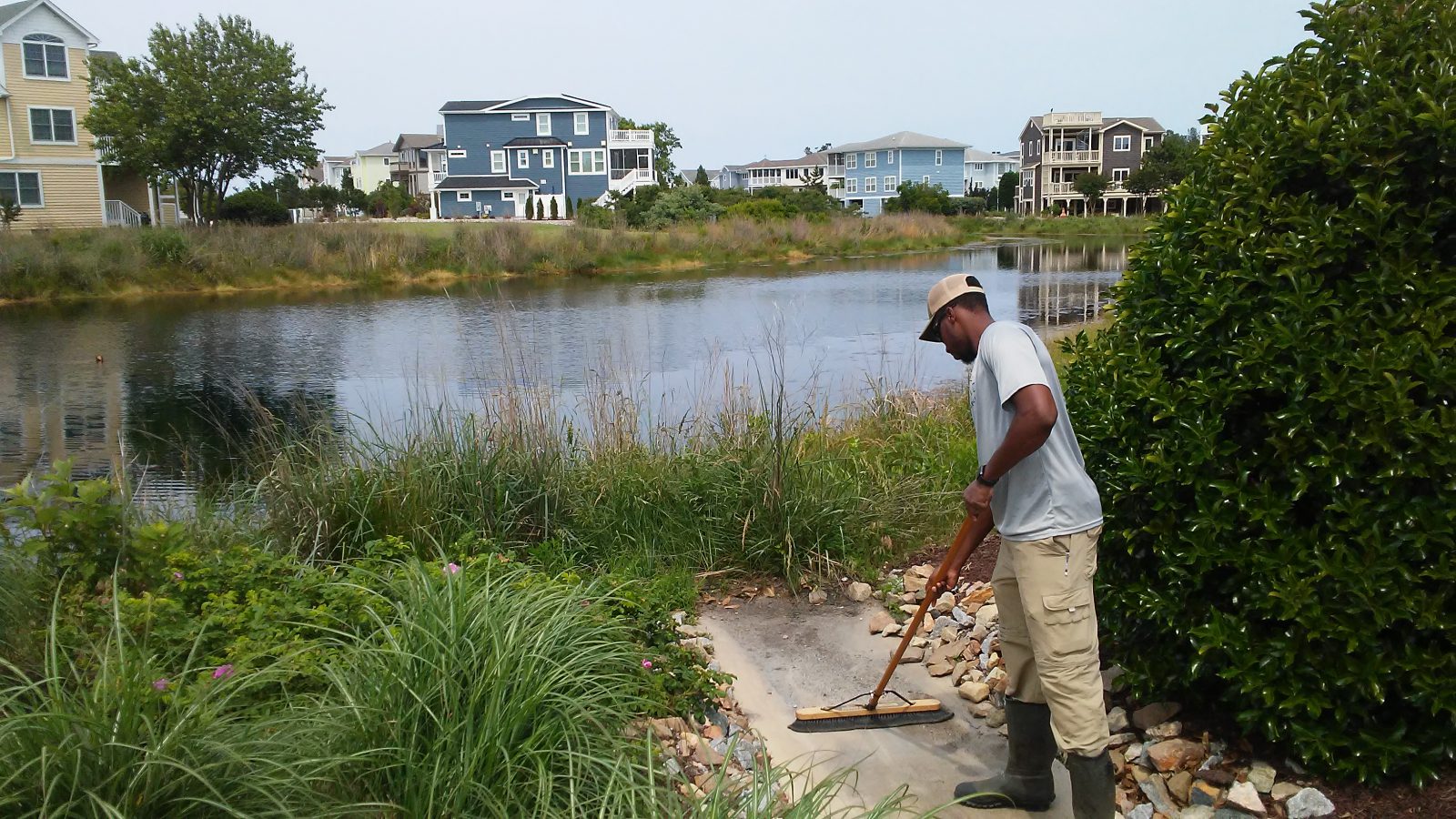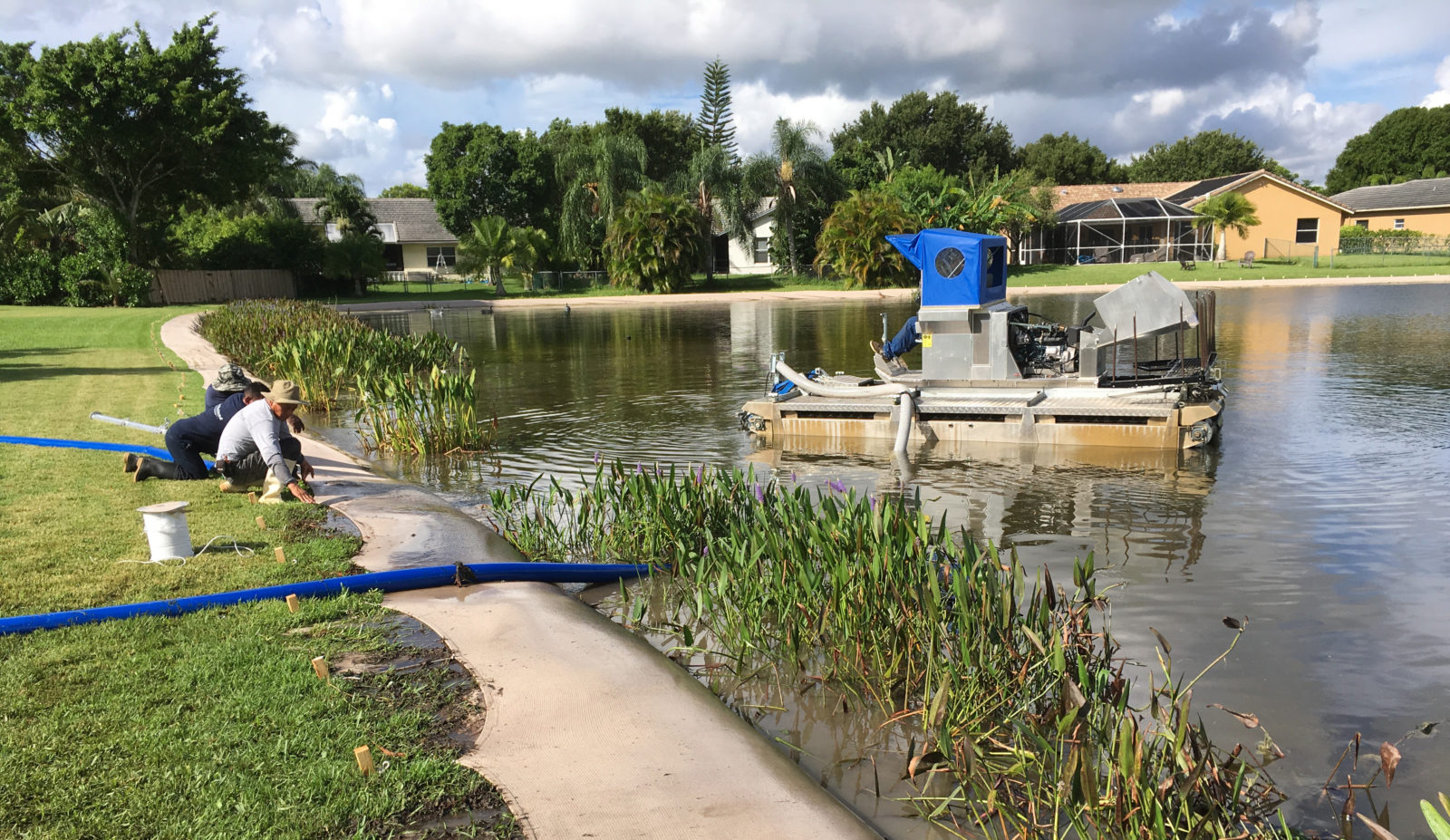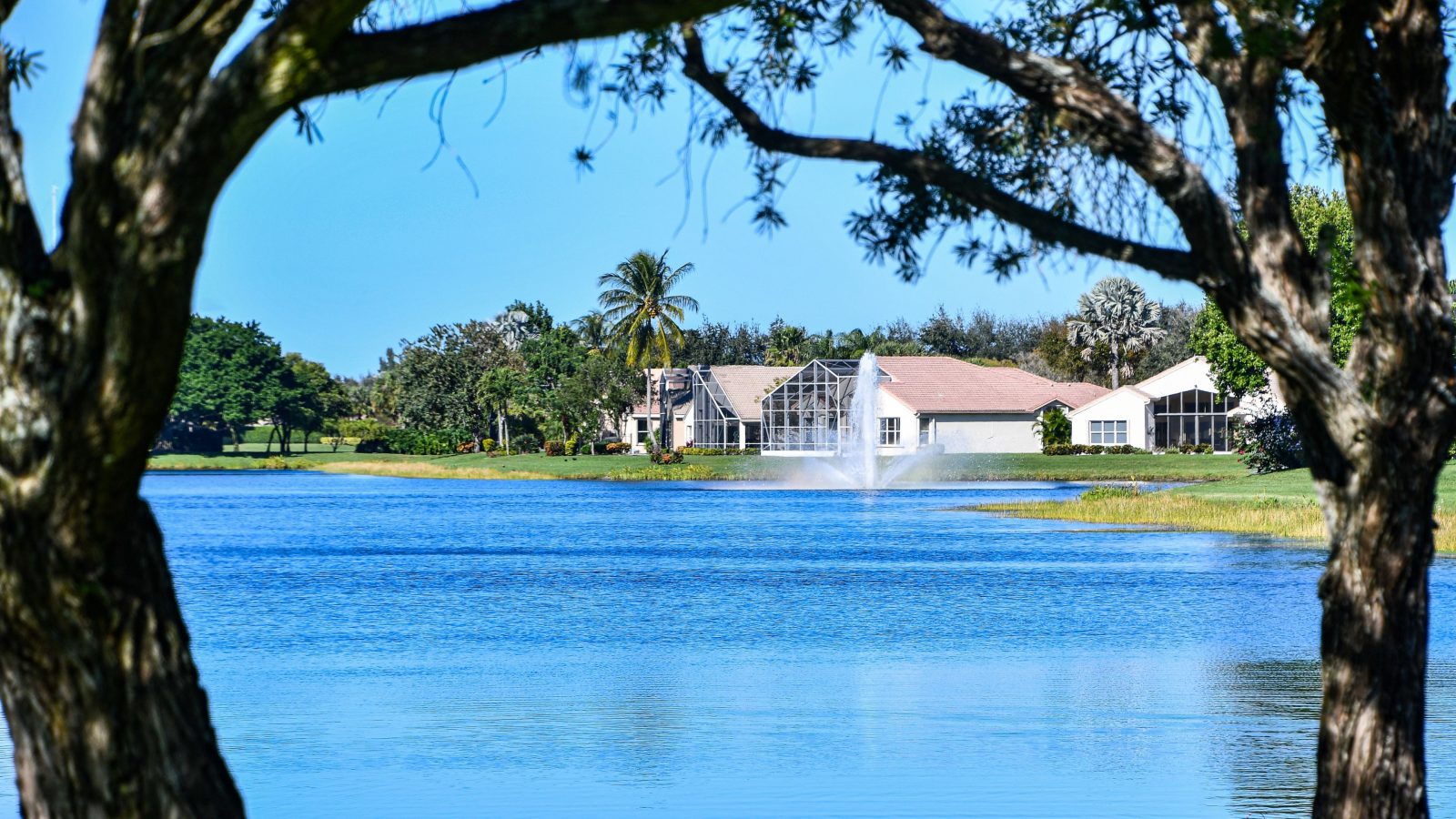
10 FAQs About Lake Management
Lakes and ponds play a central role in our communities by collecting stormwater, creating recreational opportunities, providing drinking water, and allowing us to nurture our biological desire to spend time around the water. You deserve to have beautiful, clean water to enjoy, but achieving it can be difficult – where should you begin? When you have a better understanding of these complex ecosystems, you’re able to make more informed decisions about how yours is managed. Here are some frequently asked questions to help you get started.
1. Why is my pond turning green? Is it normal for my lake or pond to have algae?
Green can be an alarming color when it comes to any body of water, but it doesn’t always reflect unhealthy conditions; plants and algae are natural features in lakes and ponds that provide essential food and habitat to native beneficial species. However, they can get out of control when the aquatic environment becomes imbalanced.
The best way to detect imbalances and identify the plants and algae that are present is through professional water quality testing. The results can help inform your management choices.
2. Why does the pond across the street always look better than mine?
It’s crucial to remember that no two waterbodies are the same. There can be vast physical and chemical characteristics based on hundreds of surprising factors, including water depth, gardening and landscaping practices, the presence of pets or livestock, how the waterbody is used, and even the level of sunlight that penetrates the aquatic ecosystem each day. The contours of the surrounding land may allow pollutants to flow into one waterbody during rainstorms without impacting the other.
While it’s tempting to replicate the maintenance strategies used by the neighbor with the beautiful pond, this underscores the importance of customized management programs. A one-size-fits-all approach will rarely yield the long-term results you desire.
3. How is the pond behind my Florida home different from one in Michigan?
As you know, all aquatic ecosystems are unique, but the reasons can extend far beyond water depth or landscaping. Seasonal weather patterns, climate, rainfall, and other regional factors will have a powerful impact.
For instance, many lakes and ponds in Florida are exposed to brackish water, especially during flooding and hurricanes. The higher salinity (accumulation of salt) can significantly alter the chemical composition of the waterbody. Likewise, Florida waterbodies are now home to many invasive plants and animals, which pose unique challenges that require different solutions. Undesirable plant growth is further accelerated by the intense humidity in Florida, which leads to more frequent maintenance.
This is not to say that waterbodies are healthier in one state versus the other; they all face similar obstacles, but the strategies and management styles may differ dramatically.
4. If a bunch of fish die, should I assume the water was poisoned?
Fish kills are rare and are sometimes connected to poisoning, but many fish kills occur naturally due to insufficient dissolved oxygen levels. Oxygen can be impacted by the level of sunlight, recent rain storms or forceful weather events, excess vegetation growth, or the transition of the seasons. However, they are preventable.
Many aquatic experts recommend fountains and aeration systems to keep dissolved oxygen levels balanced throughout the entire water column through consistent mixing. Preventing the growth of aquatic weeds and filamentous algae will also free up the water column to maximize the benefits of circulation.
Finally, testing dissolved oxygen levels on a recurring basis will help you identify and get ahead of oxygen imbalances before the fish population is affected. If lab reports indicate that dissolved oxygen levels are sufficient, then it may be worth consulting with your professional about the possibility of pollution or poisoning.
5. What is a stormwater retention pond?
Stormwater facilities (also known as BMPs) are structures that play a vital and multifaceted role in the preservation of our surrounding wetland and aquatic ecosystems. These systems are typically constructed in relation to residential and commercial development infrastructure that increases impervious surfaces and overland stormwater flow. They provide the essential temporary collection of stormwater in order to allow for filtration and basic improvement of water quality (removal of sediment, organic debris, animal waste, fertilizers, and other contaminants/nutrients) before entering natural wetland systems.
For this reason, it is critical that these specially designed and constructed systems remain functioning as intended and maintain pond compliance with local, state, and federal stormwater regulations.
6. What is causing the lake’s shoreline to erode?
Erosion is natural. It gradually happens as rainwater flows into lakes and ponds and when wildlife interact with the ecosystem. But recreation, landscaping, and urban development also influence the rate at which erosion occurs. Gutter downspouts and pavement concentrate and accelerate the flow of runoff over the shoreline. As sediment accumulates at the bottom, it reduces depth and volume – increasing the risk of flooding. Stormwater runoff also picks up animal waste, trash, leaves, lawn clippings, and other organic materials that promote nuisance weeds, algae, toxic cyanobacteria, and other water quality issues.
Though shoreline erosion is inevitable, it can be slowed and even reversed with the right management tools and strategies. Professionals encourage the introduction of beneficial buffer plants that are native to your region. Flowering, deep-rooted species can help hold the shoreline in place and deter people and nuisance animals like geese from venturing too close to the water’s edge. Shorelines can also be bioengineered for improved stability and aesthetics using a patented mesh technology called SOX Solutions.
7. Why does the shallow area near the shoreline have plants growing in it? Are those plants invasive?
Emergent plant species generally grow in shallow water near shorelines. Your lake management professional can help you determine if the species is native or invasive, and walk you through maintenance options if undesirable growth is identified.
Some invasive weeds are aesthetically pleasing. Purple loosestrife, for example, is known for its gorgeous purple blooms. However, invasive plants are detrimental to the ecosystems they invade by crowding out native plants and displacing the wildlife that relies on them for food and shelter. Without intervention, exotic weeds can quickly repopulate and spread to other ecosystems nearby.
It’s important to have regular inspections of your waterbody and consult with your lake management professional if you suspect an invasive plant has taken root.
8. Why do the specialists spray some plants and not spray others?
Every plant species is unique. From their physical characteristics to their growth patterns to their methods of repopulation, plants vary widely – and so do the methods used to manage them. Spraying may be the most effective management style for some. Others may respond best to cutting, burning, or physically pulling.
Stakeholders also have different goals, budgets, and priorities. Some may prefer to swiftly manage undesirable plants using herbicides while others desire a more holistic approach that targets the “root cause” of the growth. This typically means addressing shoreline erosion and balancing water quality with nutrient mitigation products like Alum, Phoslock, or EutroSORB.
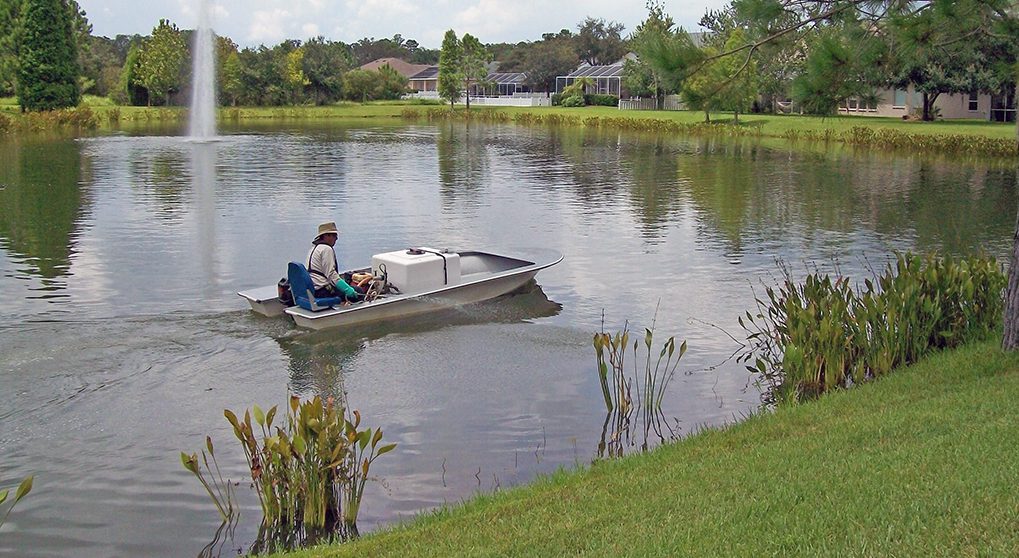
9. Won't the algae or weed products harm the fish and wildlife?
All herbicides and algaecides used by professional lake managers have gone through rigorous testing and are registered with the Environmental Protection Agency (EPA). Licensed aquatic experts also have access to advanced products that are designed to target the specific growth mechanisms in nuisance and invasive species without impacting desirable plants, wildlife, or people.
These products are considered very low risk when applied by licensed professionals. Furthermore, certain weeds and algae species can actually be detrimental to an aquatic ecosystem. Invasive plants are known to outcompete native growth and displace beneficial wildlife, threatening the biodiversity of our local ecosystems. And nuisance algae like cyanobacteria (also known as Harmful Algal Blooms or blue-green algae) can develop toxins that are fatal to fish and birds, as well as dogs, cats, horses, and livestock.
Your lake manager will be able to help you understand these intricate dynamics and weigh the management options that align best with your priorities.
10. Can't we just let the pond take care of itself naturally?
Lakes and ponds have natural checks and balances that keep them in a healthy, functional state with a flourishing food chain. But the rise of urban development, pollution, deforestation, mass agriculture, and other human activities has created new challenges that may overwhelm the ecosystem. In unbalanced conditions, lakes and ponds are more likely to experience aquatic weeds, algae and toxic cyanobacteria, fish kills, bad odors, muck development, flooding, and other problems.
These human-caused factors will not go away, but proactive management can help reduce their influence on our aquatic ecosystems. Annual Management Programs provide ongoing, professional care to maintain a healthy waterbody and catch potential problems before they get out of hand. Over time, annual maintenance approaches are often more effective and affordable for many stakeholders.
Achieve the Water You Desire with SOLitude
You value your waterbody – and so do we. We’re committed to arming you with knowledge and resources to help you visualize your ideal lake or pond and understand how to achieve it. As your partner, we’ll guide you every step of the way, so you can have peace of mind that your waterbody is on the right track at all times.
Achieve Beautiful Water with Sustainable Solutions
SOLitude Lake Management is a nationwide environmental firm committed to providing sustainable solutions that improve water quality, enhance beauty and preserve natural resources.
SOLitude’s team of aquatic scientists specializes in the development and execution of customized lake, stormwater pond, wetland and fisheries management programs. Services include water quality testing and restoration, algae and aquatic weed control, installation and maintenance of fountains and aeration systems, shoreline erosion control, muck and sediment removal and invasive species management. SOLitude partners with homeowners associations, golf courses, private landowners, businesses and municipalities. SOLitude Lake Management is part of Rentokil, a leading business services company, operating across the United States, Canada and Puerto Rico.
For more information, visit SOLitude Lake Management at solitudelakemanagement.com, and connect on Facebook, LinkedIn and Twitter.








